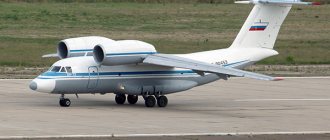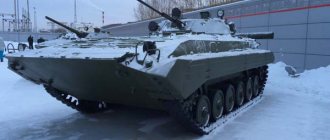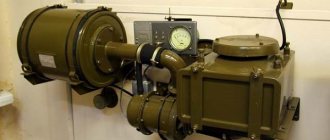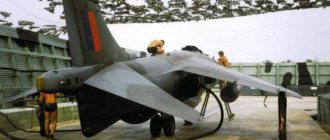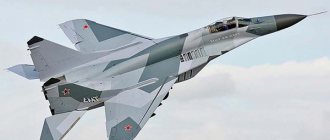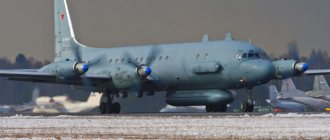Creation
After the end of the Second World War, the USSR was in dire need of an aircraft capable of fully satisfying the needs of not only the Ministry of Defense, but also civil aviation. In the mid-20th century, the country's leadership decided to begin its creation.
This work was entrusted to the Antonov design bureau, which had extensive experience in designing transport aircraft. The corresponding decree was signed in 1957, after which the creation of the An-26 began. The aircraft made its first flight in 1969, and already in 1973, it was put into operation in the USSR.
Aircraft accident rate
According to open sources, in total, during the operation of the An-26, at least 175 aircraft of this type were lost (including 15 units in Soviet civil aviation and 25 in law enforcement agencies). Since 2010, there have been nine plane crashes around the world involving the An-26 (not including the combat loss in Ukraine in 2014 and the emergency on May 30, 2022). In total, 109 people died.
In the Russian Air Force since 2000, there has been only one crash of an aircraft of this type (excluding the accident on May 30, 2022). On February 21, 2002, the An-26 (tail number “07 red”) of the 403rd separate mixed air regiment of the Northern Fleet of the Russian Navy crashed at the Lakhta airfield (Arkhangelsk region) due to a pilot error.
When landing at night in difficult weather conditions, the plane dropped below the glide path (at the same time, at an altitude of 90-100 m, a voice alarm at a dangerous height was activated, but the crew commander ordered it to be turned off and continued descent), touched the tops of trees, fell onto a snow-covered field and collapsed. 17 people died - six crew members and 11 passengers; two more crew members and one passenger survived with varying degrees of injuries.
In addition, the following accidents of the An-26 of the Ministry of Defense and the Federal Border Service of Russia (FPS, abolished in 2003, now its functions are performed by the Border Service of the FSB of Russia) are known:
On February 22, 2000, the An-26 of the separate Arctic air regiment of the Federal Border Guard Service performed a rough landing at the Chersky airfield (Yakutia) in conditions of ground fog. No casualties or injuries were reported.
On March 31, 2016, the media reported, citing a source in the Russian military department, that earlier on March 29, during the takeoff roll of an An-26 of the Russian Aerospace Forces during takeoff in the Rostov region. the right engine caught fire. The takeoff was aborted, the fire extinguishing system was activated, but the engine was completely burned out. The crew was not injured and there was no destruction on the ground.
Characteristics
Thanks to numerous unique design solutions used in its creation, its characteristics at the time of commissioning were first-class. The An-26 aircraft, the technical description of which is detailed, was significantly superior to similar aircraft.
An-26 aircraft, technical characteristics:
- Crew: 5 people.
- Load capacity: 5.6 tons.
- Normal take-off weight: 23 tons.
- Maximum take-off weight: 24 tons.
- Amount of fuel in internal tanks: 7.0 tons.
Number of passengers: 38 military personnel, or 30 paratroopers, or, in the ambulance version, 24 wounded on stretchers.
Flight characteristics:
- Cruising speed: 435 km/h.
- Maximum speed: 540 km/h.
- Service ceiling: 7300 m.
- Rate of climb: 9.2 m/s.
- Practical range: 1100 km.
- Ferry range: 2660 km.
Thanks to the presence of four beam holders, it is capable of carrying bombs weighing up to 500 kg and has limited use as a bomber. The An-26 aircraft, whose technical characteristics were at the highest level for its time, can be used to solve a wide variety of problems.
Chapter 10 AN-26
Chapter 10
AN-26
The last aircraft from the An-24 family, which most fully met the requirements of the Soviet Air Force for a light military transport aircraft, was the An-26. Today this machine is so popular that neither military nor civilian operators can do without it.
The An-26 was developed on the initiative of OKB Antonov, and only when it was possible to convince the main customer, the Ministry of Defense, in March 1968, a decree of the USSR Council of Ministers on its development was signed.
The aircraft was intended for airborne and landing landing of people and equipment, including the ASU-57 self-propelled artillery mount and the SD-85 self-propelled gun, the GAZ-69 vehicle, a 120-mm mortar and other cargo. Its use as a bomber was not excluded.
Created in 1969 on the basis of the cargo An-24RT, the aircraft is distinguished by a large cargo hatch 2.1 meters wide and 1.5 meters high, closed by a ramp that can be fixed in several positions both when lowering and when rolling back under the fuselage. The ramp lowered to the ground serves as a ramp for loading self-propelled equipment, and when rolled back under the fuselage, it serves for loading the aircraft from the side of a vehicle or for airdropping.
An-26
The new tail section increased the aerodynamic drag of the aircraft. It was possible to compensate for these losses by placing ridges in the area of the cargo hatch, which contributed to a smoother flow around the rear fuselage.
Both cabins, crew (five people) and cargo (length - 12.48, maximum width - 2.78 and height - 1.84 meters), are sealed and allow you to transport people at altitudes of up to 6000 meters without individual oxygen devices.
The plane's wing was strengthened and new KT-157 wheels with high-profile tires were installed. Like the An-24RT, it used the third RU19A-300 engine
The An-26 was equipped with modern (for those times) flight, navigation and communications equipment.
For landing and bombing with both illumination and high-explosive bombs, the NKPB-7 night collimator sight and the RSBN "Svod" short-range navigation radar system, operating both in the viewing mode of the front hemisphere and the earth's surface, were intended.
A few words should be said about the engines. Usually this most high-tech component of an aircraft is ignored in stories about winged aircraft. The An-26 is equipped with AI-24T/VT with a take-off power of 2550 e.h.p. with specific fuel consumption of 0.256 kg/hp. hour. The average operating time of the AI-24VT theater engine by 1995 was 4800 hours.
To conduct flight tests in Kyiv, two An-26s and one machine for static tests were built. The first prototype aircraft rolled out of the assembly shop at the end of December 1968, but the first flight on it was carried out by the crew of test pilot Yu.A. Ketov (co-pilot V.A. Bogdanov, navigator S.P. Kravchenko, flight radio operator M.A. Tupchienko, flight engineer P.D. Ignatienko and experimental engineer V.P. Lynovsky) was completed only on May 21, 1969. The machine, embodied in metal, immediately attracted the attention of the military, since the time had come to replace the well-proven, but obsolete Il-14T. As for the An-8 and An-24RT, they were built only a little, and they could not solve all the problems facing transport aviation.
State tests of the An-26 (leading pilot from the Air Force Research Institute I.Ya. Markov, from the Design Bureau - V.A. Bogdanov) began in September 1969 and ended a year later on September 21. During this time, almost 260 flights lasting over 430 hours were carried out on two machines. Air Force Research Institute pilots A. Boyksin and M.L. also took part in the tests. Popovich. In May 1970, the branch of the Air Force Research Institute in Chkalovskaya had one An-26 (tail number 99), which not only participated in flight tests, but also carried official passengers. So we can safely assume that the operation of this vehicle in the Air Force began in the spring of 1970.
During the tests, it was discovered, in particular, that the cruising speed of the aircraft was 15 km/h less than the specified speed, and defects were also revealed in the design of the cargo ramp. There were other shortcomings that required elimination during mass production.
The “Act on the Results of Joint State Tests” noted, in particular, that the transport capabilities of the An-26 were expanded compared to the An-24T with a take-off weight of 21 tons. Transportation of military equipment has been ensured, including self-propelled guns ASU-57, GAZ-69 vehicle, 120-mm mortars, self-propelled gun SD-85, etc. The practical flight range when transporting people and cargo and the practical radius when parachute have increased by almost one and a half times landing. It also said that “piloting an aircraft when landing single cargo, in groups and in series with a total weight of up to 4650 kg is not difficult. In terms of piloting technique, the An-26 is accessible to moderately qualified pilots.”
In 1972, the An-26 was allowed to operate from unpaved and snow-covered airfields with soil strength of at least 6 kg/cm2, and from snow-covered areas with a thickness of unrolled snow up to 20 cm.
The An-26 was also tested in the bomber version, with four BDE-34 beam holders on the pylons and an NKPB-7 sight on the fuselage, which is also used for airborne landings. The An-26 allowed the use of 500 kg aerial bombs and the transportation of various cargoes on an external sling. Naturally, this reduces the horizontal and vertical speed of the machine, but does not affect the stability and controllability characteristics.
While on An-24 aircraft the RU19-300 jet engine is used only during take-off, on the An-26 take-off is possible using only a theater engine, but with a weight of no more than 20,700 kg.
Without waiting for the end of state tests, in 1969 the An-26 was put into serial production at the aircraft plant in Kyiv and by 1985, 1402 (according to other sources - 1398) aircraft were built. Of these, 564 went to various law enforcement departments of the Soviet Union, 420 (according to other sources - 415) were exported, and the rest went to civil aviation. Since 1972, An-26 began to be operated in the air transport divisions of MAP enterprises.
In 1971, the second experimental An-26 was demonstrated for the first time at the Paris Aerospace Show. Foreign experts were especially interested in the design of the cargo ramp. At the same time, NATO assigned the aircraft the code name Curl, which means “Spiral.”
The customer's requirement to increase the vehicle's load-carrying capacity led to the creation of the AI-24T/VT engine with a take-off power of 2820 hp. These engines are still installed on the An-26 to this day. The increase in their power was achieved by increasing the air compression ratio in the compressor from 7.55 to 7.65. At the same time, the gas temperature in front of the turbine (1070 degrees Celsius) and dry weight remained unchanged, the specific fuel consumption decreased to 0.256 kg/hp/h.
The first production version of the An-26A aircraft was intended for the military and only for landing. Then a training and navigation aircraft was created for the Air Force
AH-26LU, designed to train ten cadets with a full set of navigation equipment, An-26RT repeater and An-26REP electronic countermeasures aircraft. In addition, the An-26S “Salon” was produced - a staff version for twelve passengers.
The An-26B was developed for civilian operators. Its tests began in 1974, and two years later, after completion of control tests at the State Research Institute of Civil Aviation, Aeroflot began cargo transportation. Based on the An-26B, the “Cyclone” and “Weather” variants were created, designed to cause artificial precipitation.
During the years of serial construction (1969–1985), 1,402 aircraft were produced.
Currently, aircraft of this type are being converted into passenger (including for VIPs) and cargo-passenger versions of the An-26B-100 at the aircraft repair plant in Kyiv.
Medical An-26M “Rescuer” is a flying hospital designed for emergency medical assistance to victims of natural disasters and armed conflicts.
The first modification of the aircraft created after the collapse of the Soviet Union was the An-26D - with two overhead fuel tanks with a volume of 1,500 liters each on the fuselage. This made it possible to increase the flight duration at the best altitude by 3.4 hours. The An-26D was tested at the branch of the 929th GLITs Air Force (former branch of the Air Force Research Institute in Chkalovskaya near Moscow) in the summer of 1996. Compared to the An-26A, the flight range of the An-26D increased, depending on the outside temperature, by 1000–1400 km. Judging by the advertising brochures, the advantages of the An-26D began to appear at a commercial load of about 2000 kg. But this car remained in a single copy.
In addition to the mentioned options, the following are known: the forest fire An-26P with two external tanks for fire extinguishing liquid and the An-26 “Standard” - for checking the operation of airfield radio equipment, communications and lighting equipment of airfields - ASLK-N.
The latest modification of the aircraft was the An-26BUS air control center, created at the ASTC named after. OK Antonov in early 2007 and, apparently, for the national Air Force.
Several variants of flying laboratories have been created based on the An-26. In particular, the Sfera, designed for research into the physical properties of the atmosphere, and the An-26RL for fish and marine exploration. The latter, equipped with an additional fuel tank, can stay in the air for about nine hours. The aircraft is used not only to study the seas and their inhabitants, but also to determine the thickness of the ice cover and search for oil and gas. Until recently, the only copy of this aircraft was based in Arkhangelsk.
The An-26 “Banquet” was created to study the Earth’s magnetic field. In the rear part of the fuselage there are two five-meter rods on which aerial magnetometers were mounted. Two more of the same sensors were placed in gondolas towed on cables 100 m long. In the stowed position, the gondolas were fixed using holders attached to the sides of the fuselage.
In 1982, the An-26's service life was 12,000 flights, then it was extended to 36,000 hours (20,000 landings), and its service life was 30 years. It is possible to individually extend the life of the aircraft at the request of the customer.
In 1988, the media reported that operating An-26 aircraft was futile even with a planned economy, planned losses and profits. Fortunately, the "experts" were wrong and the aircraft continues to fly for both the military and airlines.
In the armed forces
The An-26 was put into service in May 1975, but they began to arrive in law enforcement agencies in 1970, first at the Balashov VVAUL, then the An-26SH at the Chelyabinsk and Voroshilovgrad navigator schools. In the same year, twelve “trucks” entered the 10th separate Red Banner Special Purpose Brigade (OKBON) in Chkalovskaya, near Moscow. The aircraft differed slightly in its operational characteristics from the An-24, was well received by the armed forces and quickly replaced the piston Il-14T.
There were no An-26 regiments or separate air squadrons in military transport aviation. In the Air Force and Navy aviation, as well as other law enforcement agencies, these machines performed only auxiliary tasks.
The flight and technical staff liked the plane. The car turned out to be pleasant to pilot, stable, and often forgave even the pilots’ gross mistakes. The An-26 was distinguished by good operational and takeoff and landing characteristics, unpretentiousness, high reliability and structural strength. The AI-24VT engines were highly praised, failures of which occurred extremely rarely, but if one of them still failed, the plane could continue to fly, and landing did not pose any particular problems even for an averagely qualified pilot. The “Twenty-sixth” had to fly quite a lot from unpaved airfields, demonstrating its unpretentiousness.
In November 1991, the crews of the Air Force Research Institute, led by L.A. Kozlov and A.S. Butakov set three world records.
The An-26 flights, unfortunately, were not without casualties. The first crash of a military An-26 apparently occurred on May 16, 1972. That day, the aircraft crew, returning to the airfield after reconnaissance of the weather over the sea, forgot to adjust the barometric altimeter to the airfield pressure, and it showed an overestimated altitude. When crossing the coastline, the An-26 entered dense fog and, finding itself at an unacceptably low altitude, crashed into the building of a kindergarten in a residential area of Svetlogorsk...
On May 3, 1985, due to a controller error in the Lvov region, the headquarters An-26 of the Transcarpathian Military District, on board which was almost the entire air force command of this district, collided in the clouds at an altitude of 3400 meters with a Tu-134 of the Estonian Civil Aviation Administration, en route from Tallinn to Chisinau .
On April 20, 1988, An-26 (commander S.N. Melnikov) of the 8th Akdon carried out training flights in a circle with landings at night. After the next touch, the engine power was sharply increased, which caused automatic feathering of the propeller of the right theater, noticed by the crew only at an altitude of 70 m. An attempt to start the RU19-300 engine failed, and the plane, having lost speed, touched the roof of a rural house in the area of Kolontaevo near Moscow and collapsed to the ground...
The Russian Ministry of Defense lost its last An-26 on the evening of February 21, 2002. That day, the plane was descending in poor visibility conditions and after a sudden snow charge, hitting the landing gear of treetops, it crashed to the ground, not reaching the runway about one and a half kilometers.
Until recently, not a single armed conflict in Asia and Africa could have survived without the An-26; in particular, the An-26 had a chance to participate in the Afghan war. Transport aircraft that were part of the 50th separate mixed air regiment, based in Kabul, not only delivered ammunition and military equipment to the troops, but also took the wounded to the rear. The An-26M “Rescuer” flying hospital saved dozens of soldiers’ lives during the war in Afghanistan. In the same war, “Anas” were first used as bombers, sometimes lifting four 500-kg bombs on external holders.
An-26 Russian Air Force
There were losses in Afghanistan. The rebels shot down the first car on January 22, 1985, the second on December 26, 1986. The last An-26 was apparently lost in October 1987.
Several An-26s supported the activities of the 202nd Division during the civil war in Tajikistan. The war in Chechnya could not have happened without them; the AN-26RT electronic reconnaissance aircraft turned out to be especially useful there. In the summer of 2000, An-26s were repeatedly used in Chechnya to reconnaissance the routes of movement of militants and as repeaters. Dudayev’s “rebels” also used them when delivering cargo and ammunition from Azerbaijan.
If 15 years ago the Air Force had a surplus of aircraft of this type, today there is an acute shortage. This circumstance forced us to begin developing a new light transport aircraft, the Il-112V.
In civil aviation
The use of the An-26A by Aeroflot began in 1973. In December, the Irkutsk United Aviation Squadron (JSC) of the East Siberian Civil Aviation Directorate received an aircraft with the identification mark of the USSR - 26533, then - to the Tyumen Directorate (USSR - 26503). They retained airborne transport equipment and weapons. On October 21, 1975, an order was signed by the head of the Ural Civil Aviation Administration “On the organization of an air squadron of An-26 aircraft in the 299th flight detachment of the Magnitogorsk enterprise,” and flights began in December.
In 1976, after completion of control tests at the State Research Institute of Civil Aviation, Aeroflot began operating the An-26B. A year later, an An-26 detachment was created at the Arkhangelsk Department to service expeditions of the Institute of the Arctic and Antarctic.
Under conditions of intensive operation, the An-26 demonstrated high reliability. Suffice it to say that until recently the total flight time per failure was almost twice that of the An-12.
After the collapse of the Soviet Union in the CIS countries, An-26s were concentrated mainly in Russia, Ukraine (about 80 vehicles), Belarus, Uzbekistan and Kazakhstan. Several cars remain in Moldova. If in the Soviet Union the majority of An-26s were in the security forces, then after 1992 this ratio changed towards civilian operators. This was greatly facilitated by the transfer of purely military “Anov” to the newly formed airlines. According to ASTC data. OK Antonov, at that time they had 358 An-26s.
Thanks to the ongoing process of democratization of Russian society, it became known that in 1993 the total flight time of the An-26 on an average aircraft was 549 hours, after which it began to slowly and surely decline to 95 hours in 1998. By that time, there were 230 An-26s in the civil aviation of the Russian Federation.
A feature of the post-Soviet period was a change in the range of goods transported. Increasingly, paying passengers began to be transported on cargo planes, like paratroopers, in the side jump seats, without thinking about their safety. So, in June and December 1993, two cars crashed - in Tbilisi and Yerevan, killing 40 and 33 people, respectively.
Since April 2001, airlines flying on European routes were faced with the problem of equipping the An-26 with mid-air collision avoidance systems, and a year later additional restrictions on local noise came into force in accordance with Chapter 3 of Annex 16 of the ICAO Standards. The owners of "Anov" had to fork out money. If in the first case it was necessary to purchase expensive equipment, then in the second case, specialists from ASTC named after. OK Antonova has developed a new methodology that allows you to obtain the appropriate certificate.
As of January 1, 2002, Russian airlines operated 181 An-26 aircraft, in 2003 - 165, a year later - 145. The service life of the aircraft is steadily decreasing, which sometimes leads to various failures and breakdowns. So,
On February 19, 2004, at the Yakutsk airport, while taxiing for a preliminary launch, an An-26 belonging to the Mirny Aviation Enterprise lost its propeller. On April 4, 2004, another similar incident occurred on a plane (RA - 26552) flying along the route Almaty - Ulaanbaatar - Abakan. During the flight, the propeller of the left engine came off, the impact of which damaged the fuselage. The plane landed safely at the airport in Kyzyl (Republic of Tuva). The investigation showed that the cause of the flight accident was a fatigue fracture of the propeller shaft caused by fretting and corrosion damage to its splines.
Abroad
Today, the An-26 is widely used not only by the military, but also by airlines in many countries. As already mentioned, the Soviet Union exported over 400 aircraft of this type, which were scattered throughout the world.
In 1972, the first seven An-26s arrived in Poland, the 1st squadron of the 13th transport air regiment, based in Krakow. The fleet of Polish Air Force aircraft was constantly replenished, but since 1986 they began to be transferred to airlines.
Then the An-26 was acquired by Bulgaria, Hungary, East Germany, Romania, Czechoslovakia and Yugoslavia.
In 1975, the foreign trade association Aviaexport organized a promotional tour of the An-26 across African countries. The result was the delivery of 30 vehicles to Libya. They played an important role in supporting the Libyan Expeditionary Force and local rebels during the Chadian War, which ended in 1986.
Failure to maintain aircraft alignment is not uncommon. As a rule, the crews cope with this, but there are exceptions... Gross violations of discipline and the An-26 flight manual led on December 26, 1993 to the crash of an aircraft flying along the route Krasnodar - Gyumri (Armenia). According to the flight sheet, two Niva cars and six people (except for the crew) were taken on board the plane. After passing customs inspection, the flight was delayed, and during this period of time another 25 stowaway passengers were added to them.
As a result, the aircraft's overload weight exceeded 2,500 kg, and since additional passengers and their luggage were located in the rear of the aircraft, its alignment reached the maximum rear value. Theoretically, this is not scary, but provided that the crew is well prepared for such flights.
Having crossed the Caucasus ridge, the crew pulled out the fuses from the on-board recorders in such a way that voice information was not recorded. This circumstance significantly complicated the work of the emergency commission, however, experts suggested that in bad weather conditions during the landing approach the crew was confused. The decision to go around was made late... The plane crashed near the runway, killing 34 people, including the crew.
In this regard, I recall an incident that took place on an An-12 plane: “In the evening, the plane was loaded, suggesting an intermediate landing in Bryansk in order to take ammunition on board. However, the next day everything changed, and we flew to the training ground in a front-center vehicle. If memory serves, on that flight the commander was M.L. Popovich, and an inspector from the Air Force was sitting in the right seat. There was a thunderstorm in the area of the airfield that May morning, and after the second circle it became clear that there were not enough rudders for a normal landing. Fortunately, the fuselage was half empty; all accompanying crew members, including “free” crew members, were sent to the rear to create the necessary alignment. And yet the landing was “rough,” and on a wet runway. But everything worked out.”
An-26D with overhead fuel tanks
Abroad, the An-26 was not used for peaceful purposes, hence the heavy losses, including combat ones. After the collapse of the Soviet Union, many cars gradually migrated to foreign countries. In 2002, there were 286 aircraft in 33 countries, including in Asia and Africa. There they are operated, to put it mildly, “according to condition” and often, in the pursuit of profit, overloaded. Hence the high accident rate. Angola became especially famous, where war became the norm of life. About 20 Anova were lost in Angola.
Today, the countries of the former socialist camp are gradually getting rid of the An-26. For example, Bulgaria began replacing them with the C-27J Spartan. They followed the same path in the Czech Republic. At the same time, in China, an analogue of the An-26 is still being built under the designation Y-7-300.
Reliable, time-tested, with excellent takeoff and landing characteristics, the An-26 aircraft still enjoys well-deserved authority among aviators around the world; it can be found even on the American continent.
The assigned service life of the aircraft has reached 38,000 hours or 20,000 landings. This will allow the machine to be used until 2015. Currently, An-26 aircraft are being converted into passenger versions at the request of airlines.
During its operation, the An-26 transported a huge, unquantifiable amount of cargo and passengers.
Fuselage
The fuselage of this aircraft has four compartments:
- nasal;
- average;
— hatch;
- tail.
Their joining is carried out along the casing. Most of it is made of aluminum alloys and duralumin. The fuselage houses the flight deck as well as the cargo compartment. The latter has a built-in conveyor, and in the upper part there is a monorail with a hoist. They are necessary for loading and unloading the An-26. The aircraft, thanks to their presence, is able to accept or unload cargo in the shortest possible time.
Its fuselage has one entrance and four emergency doors. In addition, there is an operational and cargo hatch. To better seal the An-26 cabins, doors and hatches, a special sealant and rubber profile are used.
The aircraft's skin is made of duralumin sheets, the thickness of which ranges from 0.8 to 1.8 mm. They are fastened using electric welding, special glue or rivets.
Existing modifications
- “Product 400” was the first encrypted name of the aircraft, used during design and manufacturing.
- An-124 - the initial model of a military transport model
- An-124-100 – commercial transport aircraft
- An-124-100M - a special modification for the An-124-100, including the presence of an improved on-board electronic equipment
- An-124-100M-150 - the same modification, but the crew has been reduced from six people to four, and the load has been increased to 150 tons.
Currently, the future fate of the aircraft is connected not only with air transport, but also with space programs. This refers to the use of Ruslan as a launch platform for launching launch vehicles weighing up to three tons in the air.
Initially, the An-124 was intended as a base model for a large number of modifications. The main options were cargo and passenger transport and a tanker aircraft. Due to positive forecasts in commercial transportation, the Ruslan began to be transformed into a passenger version, capable of transporting more than 800 people over a distance of up to ten thousand kilometers. And this project could have been implemented, but there was no need to create it.
At the moment, there is only one ex-military modified aircraft for commercial transport - the An-124-100. ANTK and Aviastar CJSC received a Certificate of Airworthiness after conducting certification tests.
Wing
The An-26 has a cantilever, high-mounted rectangular wing. It includes a center section, a detachable section and a middle section. Their joining is done using butt elbows, connector profiles and fittings.
By its design, the An-26 wing (the photo of the aircraft fully confirms this) is of the caisson type and includes stringers, skin and 23 ribs. There is heating on the wing tips that prevents it from icing. The thickness of the sheathing differs depending on the area. On the tail parts there is a control rod for ailerons and flaps.
Passenger aircraft models
The first production version was the An-24A airliner. After its modernization, aircraft manufacturing companies began production of the An-24B model. The aircraft's take-off weight has been increased. Until 1970, 400 copies of these machines were produced. The most popular version was the An-24RV model. It was distinguished from its predecessors by the presence of an additional engine, which significantly improved the take-off and flight characteristics of the aircraft.
In this regard, duplicate piloting was created here, which allows each pilot to control the aircraft from his own seat. This system is unique because if one remote control fails, the second pilot can take over control of the aircraft. In addition, there is an autopilot system, which greatly facilitates the work of pilots.
The first model was equipped with the most reliable radar equipment of the time. This version of the passenger aircraft could accommodate 50 people and was intended for short-distance flights. These were local airlines. The operational life of the modernized aircraft was increased to 50,000 flight hours, which was considered a good indicator at that time.
Photo An-24RV
Then they released a more comfortable model, however, the number of passenger seats was reduced. If necessary, the An-24 passenger aircraft can be quickly converted into a cargo version. This is done quite quickly, thanks to removable chairs. An important advantage of the aircraft is the ability to land on snow-covered and wet runways. In addition, the aircraft does not require a very long acceleration - 650 meters is enough.
The liner made its first flight with people on board in September of the same year. A month later, Antonov’s planes began flying on the Kyiv-Kherson route. Soon they began to serve the route Moscow - Voronezh - Saratov.
All models are so reliable and demonstrate high performance characteristics that they are used to perform a variety of secondary tasks. First of all, this is due to the fact that An-24 aircraft do not need very long runways.
Another advantage compared to similar aircraft of this class is increased fuel economy. This is what allows the aircraft to be operated on short routes. Today there are over 40 modifications of such airliners.
Photo of the An-24 interior from UTair
Stabilizer and elevator
The An-26 stabilizer includes two consoles, each of which has a tail section, a sock, an end fairing, a lower and an upper panel. The stringers are attached to the skin using special electric welding, and to the spars and ribs they are simply glued. The stabilizer is connected to the fuselage using fittings and bolts.
Trimmers are installed on each part of the elevator of the An-26, and they are controlled by moving the steering wheel away from you or toward you. Due to the fact that the control is duplicated and can be carried out by both pilots, the reliability of the aircraft increases. The elevator is also equipped with an autopilot, which allows pilots to rest during the flight. You can control the elevators manually after the autopilot is turned off.
Catastrophe
The An-26 aircraft SSSR-26627 (factory number 77305208, produced in 1977) was flying from Sukhumi to Krasnovodsk with the first intermediate landing in Rostov-on-Don. There were four crews on board: an instructor crew and three trainees, a total of 16 people. The purpose of this flight was to train the crews according to the program for retraining them from the An-24 to the An-26, and at the same time increase their flight hours. Having been delayed at Sukhumi airport for more than 2 hours (an attempt at unauthorized transportation of 300 kilograms of tangerines), the airliner completed the first part of the flight without any significant problems and landed at Rostov airport[1].
When starting the engines, the auxiliary engine RU-19A-300 was unable to reach nominal mode because the restart tape was faulty. In violation of flight instructions and the aircraft's flight manual, the crew decided to take off, although due to a drop in the total thrust force, the take-off weight was overestimated by 943 kilograms compared to the calculated one. In this case, the alignment did not go beyond the normalized limits. In Rostov-on-Don, by that time it was already night, and there was fog above the ground, while vertical visibility was 60 meters, horizontal visibility was 720 meters, and visibility from runway lights was 1130 meters, which corresponded to the meteorological minimum of the crew commander. There was also a south-southeast moderate wind blowing[1].
At 20:42:42, the An-26 took off from the runway and began to climb at a speed of 283 km/h. However, at an altitude of 70 meters, it began to gradually be blown off course by a side wind, but the crew did not notice this, since the flight took place in dense fog. When at 20:43:20 the plane passed an altitude of 170 meters at a speed of 320 km/h, the commander gave the command to retract the flaps, which was done in two steps. Due to the fog, the crew did not see landmarks and did not notice how the overloaded and poorly balanced airliner went into a drawdown and was unable to parry it in a timely manner. Abruptly losing altitude, the An-26 accelerated in 10 seconds to a forward speed of 370 km/h and a vertical speed of 18 m/s[1].
Only at an altitude of 120 meters did the pilots realize the current situation and pulled the controls towards themselves. However, due to the colossal overload in 4 seconds, the rate of descent managed to decrease only to 5-7 m/s, when at an altitude of 38 meters relative to the level of the airfield, a plane with a raised nose and engines operating in take-off mode crashed into the trees of the forest belt at a speed of 405 km/h , as a result of which he lost the right side of the wing. Having begun to enter a right bank, the airliner hit the ground after 75 meters with its right engine and tail, rushed along it for another 75 meters, and then, 5 kilometers from the runway and 1180 meters to the left of its axis, crashed into the trees of the second forest belt and was completely destroyed. All 16 people on board were killed. The entire flight lasted a minute and 40 seconds[1].
List of crew members
- Vyacheslav Ivanovich Alekseenko
- Viktor Vasilievich Andreev
- Nikolai Vasilievich Babkin
- Ravil Daniyalovich Bigeev
- Nikolai Nikolaevich Getmanov
- Marat Gayazovich Gimranov
- Mikhail Egorovich Glekov
- Nurmamed Dashliev
- Ivan Anatolyevich Dementyev
- Mldaman Yuldashevich Ishmetov
- Vladimir Aleksandrovich Kaplin
- Sergey Akimovich Levada
- Andrey Valentinovich Sukhomlinov
- Viktor Anatolyevich Tkachenko
- Vladislav Alekseevich Ustyugov
- Gennady Lukich Sharov
Coloring
All An-26s that were part of the USSR Air Force were gray in color. Airplanes used in civil aviation were painted in Aeroflot colors. In modern Russia, civilian An-26s (you can see a photo of the aircraft in the article) are painted with colors depending on the wishes of the company that owns them. These aircraft, which are operated abroad, most often have a camouflage coloring.
The instrument panels on the plane are black. The cargo compartment is much better than, for example, on the An-12. The walls are painted green and the walls and ceiling are white.
Airplane cabin: the best and worst places
The usual layout of the cabin of the passenger version of the airliner is 10 - 12 rows of seats arranged in 2 rows. Each row has 4 chairs, located 2 on the right and 2 on the left of the aisle. The aircraft's capacity is from 48 to 52 passengers.
Salon An-24
There is no need to talk about any amenities typical of large airliners with business class seats. Passengers experience conditions typical of economy class.
The category of seats in the cabin that are characterized by inconvenience includes the seats of the first row. The reason is limited legroom. Passengers in the last row may experience inconvenience. The seat backs may not recline here. A common disadvantage for passengers is the noise from running engines. Moreover, it is present approximately equally in both the bow and stern parts of the cabin.
The only positive fact is that the An-24 is used for flights only over short distances. That is, passengers experience the existing inconvenience for a short time. So, in most cases, the existing comfort in the cabin is sufficient for such a flight.
An-24 passenger seat diagram
Design and layout of the An-24 aircraft
This model is an all-metal cantilever monoplane with a high wing. There is also a three-post chassis with two front twin wheels. The An-24 passenger aircraft consists of the following parts:
- Semi-monocoque fuselage.
- Power set - stringers and beams. The connections are glue-welded.
- The layout is traditional: in front there is a crew cabin, then between the luggage compartments there is a passenger compartment with a buffet and a toilet.
- Wing: power set - two spars and 23 nerfs.
- Flaps: on the center section - single-slot. They are deviants. Next - double-slot retractable ones. The ailerons here are split.
- The plumage is of the traditional type with an additional ventral fin.
- Chassis: tricycle with a rotating front strut.
- Double wheels. The pressure in them is regulated on the ground.
- Power plant: 2 TVD AI-24. In this case, the power is 2550 hp. With. There is a variable pitch propeller here. Its diameter is 3.9 m.
